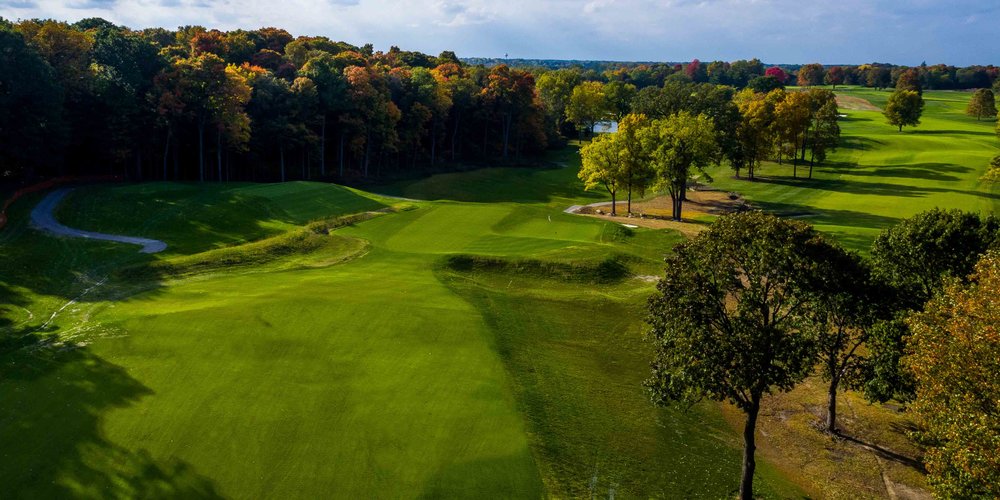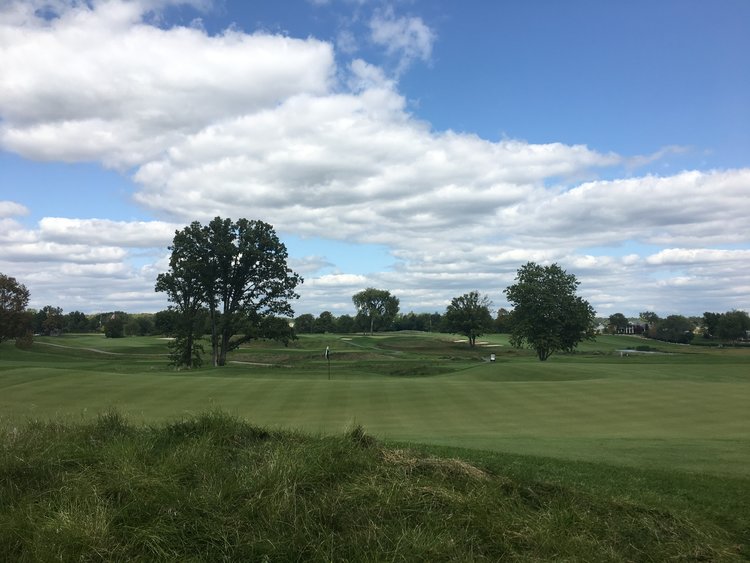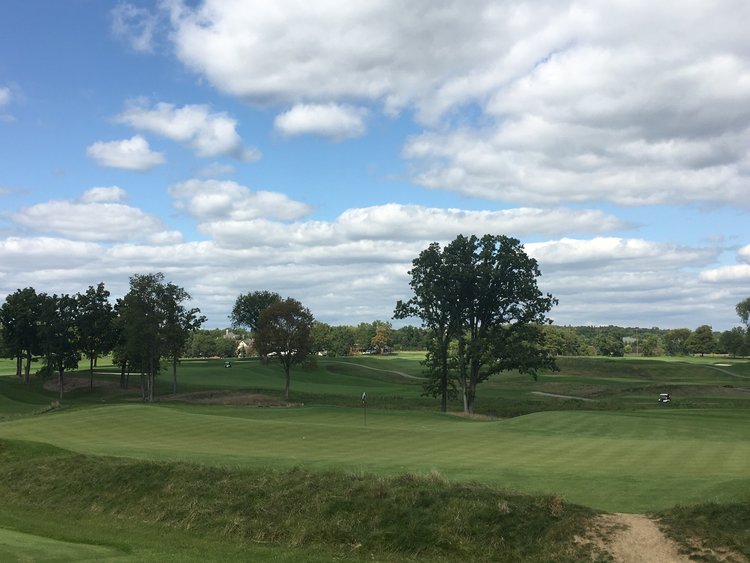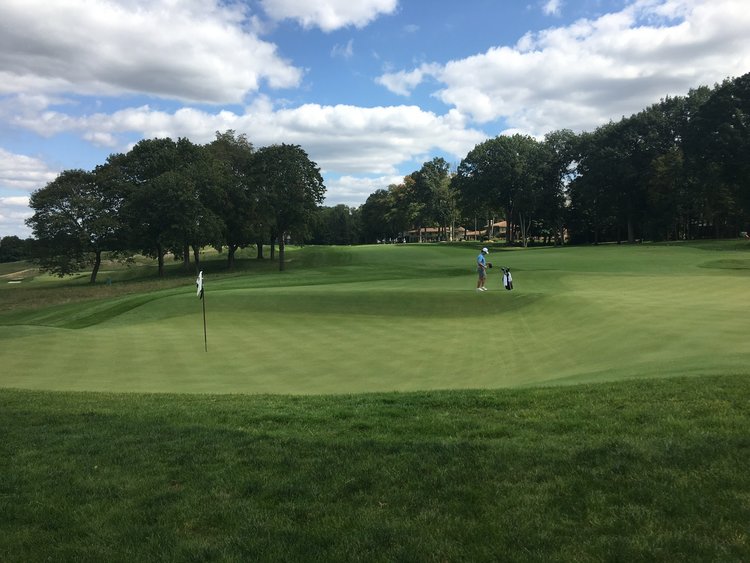Hints of Huntercombe
Looking out from the second green at Meadowbrook’s beautiful and expansive landscape, I could feel a golf course filled with enjoyment. Golfers all over the course were utilizing the bold contours; attempts were accompanied by joyous yells for good shots and laughter following poor efforts. It was clear that I was in store for a day filled with fun golf.
Situated 30 miles Northwest of Detroit, MI is a conglomerate of architectural ingenuity that was the surprise of 2017 golf schedule. Meadowbrook Country Club, an original Willie Park Jr. 6-hole design in 1916 was recently renovated by Andy Staples and opened in May of 2017. His restoration centered around paying homage to Park and bringing a new style of architecture to the Detroit metro area. My 18 hole experience was filled with exhilarating shots and breathtaking moments. One hole that stuck with me was the fun and strategic short par-4 3rd.
A quick history lesson
To appreciate the third at Meadowbrook, one must understand it’s lineage. During the restoration, Staples sought inspiration from the historic Heathlands of England. The sandy soiled area’s list of courses boasts architectural masterpieces Sunningdale Old, Alwoodley, Walton Heath, Swinley Forest, as well as a lesser known Willie Park Jr. 1901 design called Huntercombe. Listen to our podcast with Andy Staples here
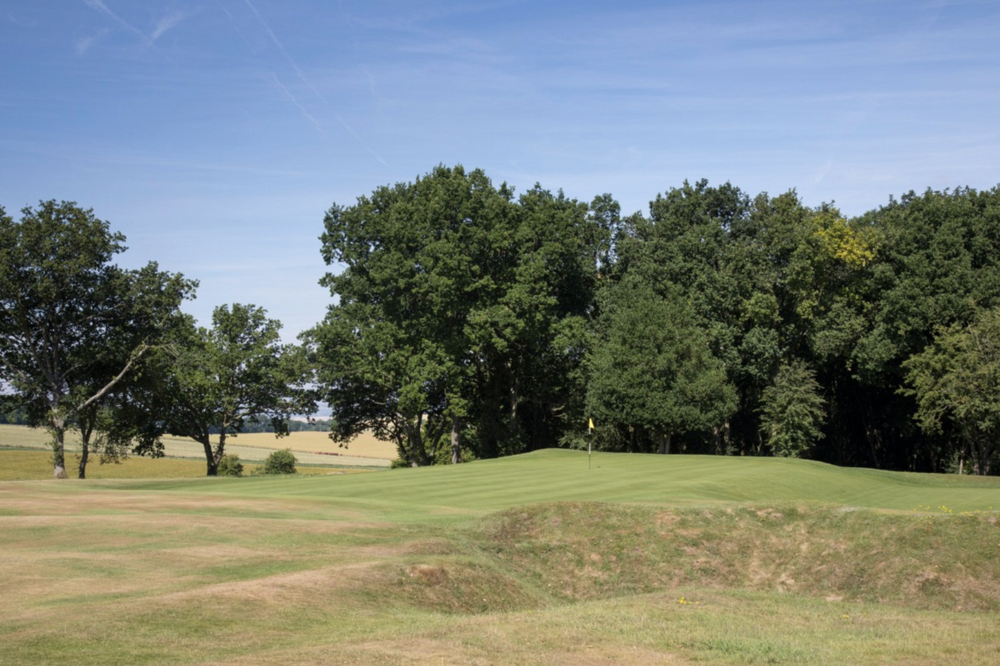
The 4th at Huntercombe - Photo Credit: Huntercombe Golf Club
Huntercombe is hardly a household name among Americans, but renowned architect Walter Travis described Huntercombe as “easily the best laid out links I have played over anywhere.” The man responsible for Huntercombe’s design and its ownership was Willie Park Jr. Today, it remains a site where one can understand how Park grew into his style of golf course architecture. It’s also quite easy to see how the fourth hole at Huntercombe provided a template for Meadowbrook’s third.
More on the third…
At first glance, it appears you are in for just an ordinary short par-4, measuring just 369 yards. The third takes you along the Southern boundary of the property and has the slightest rightward movement. A closer examination reveals that this Park template is anything but ordinary. It all starts from the tee. Staples mentioned in the most recent “Architect’s Roundtable” segment that tee position is a very overlooked portion of golf course architecture. The teeing ground is parallel to the property line while the green is angled right. This subtlety puts a stronger importance on the tee shot and is influential into the hole’s strategy. Understanding the day’s pin position is key on the tee shot. The green angles to the right and has a reverse “L” shape. There is a sliver of green on the long section of the “L” which then drops into a five-foot deep bowl which makes up the short part of the “L.”
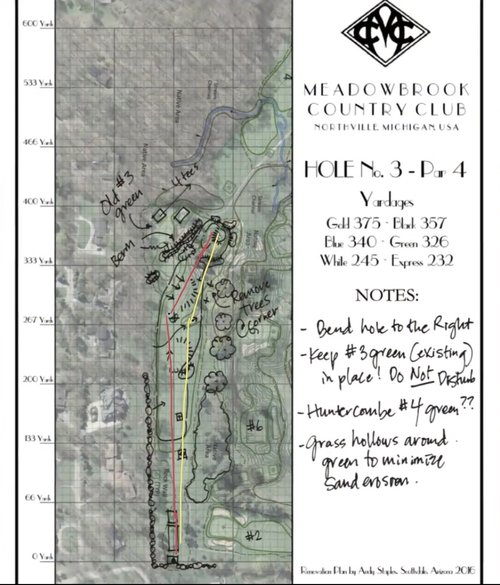
Andy Staples's sketch of the 3rd
The short four’s tee shot is demanding, out of bounds runs down the left and a steep hill of fescue lurks along the right. Positioning is key to setup an approach to the angled green. The third’s dramatic external and internal contours demand thought on the approach shot.
When the pin is on the long and narrow left side of the green, the ideal place to approach is from the left half of the fairway. This position provides players with an open look at the green and an optimum angle.
A flag on the right side will reward a tee shot up the right half. It allows players to use the backboard behind the green or a low running shot which can use the “landing pad” and ride the green complex’s contours toward the hole location. While the angle is better on the right side, the view of the green, fairway, and pin are obstructed by a massive grass-bunker. The deceptive feature and strategy are reminiscent of Park’s “Bottle” hole at Sunningdale.
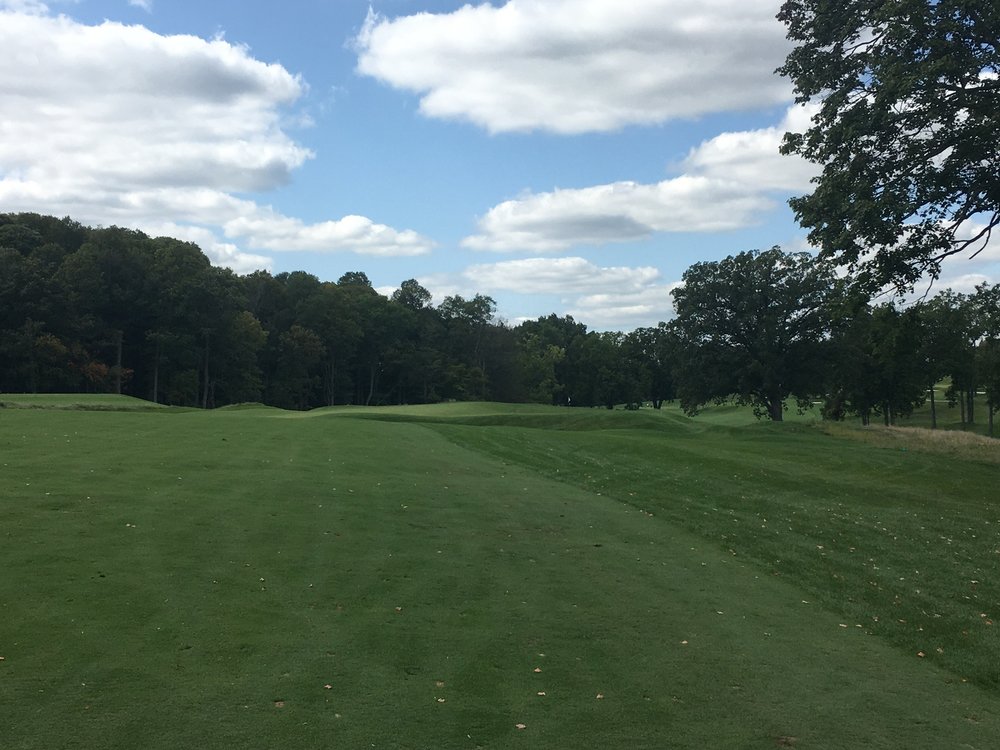
Approaching the third from the right side of the fairway
The proper angle is critical to attacking a pin and finding the correct tier of the green. An attempt to attack with poor angle typically leads to balls finding the wrong tier or one of the many grassy hollows which surround the green. A miss there will likely result in a bogey or worse. Once aboard the correct tier of Park’s masterful green, putting is relatively easy, with all hole locations residing on a relatively flat surface.
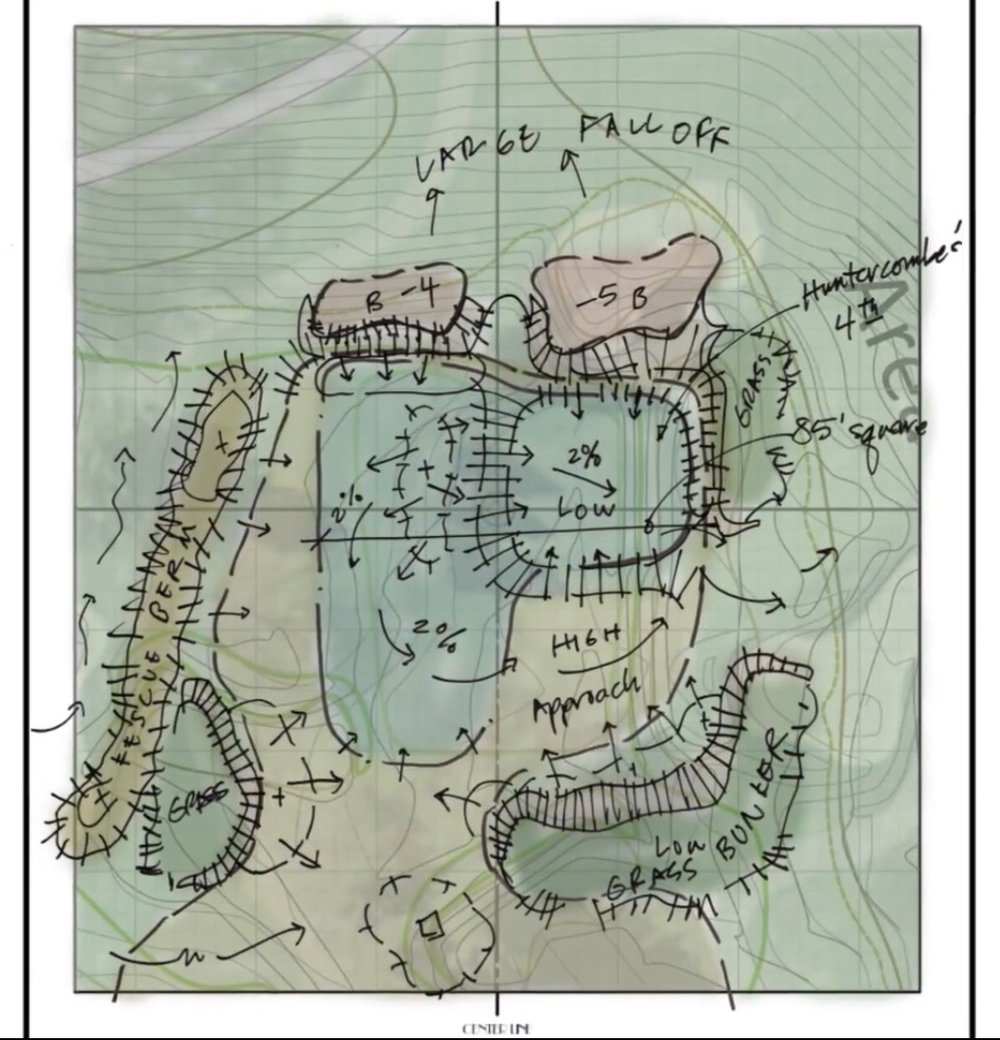
The design of the 3rd's green
Short par fours are fascinating; they provide endless options and fun for golfers of all skill levels. Meadowbrook’s third and the fourth at Huntercombe belong in the pantheon of great short par-4s. Much like the 10th at Riviera and the 8th at Pine Valley, Meadowbrook’s third requires a combination of power, strategy, and execution to have success. All of these holes are great because they make the player think about the green’s hole location before positioning their tee shot.
The short par four third at Meadowbrook provides a combination of strategy and deception along with its unique green complex; this hole gave me a new appreciation to the 2013 World Golf Hall of Fame inductee Willie Park Jr.
Thanks to Andy Staples of Staples Golf Design for help with information and pictures of Meadowbrook for this article.
For golf fans who want to bring home a piece of this course, we offer a collection of Meadowbrook photography prints shot by the Fried Egg Golf team available in our Pro Shop.


 by
by 